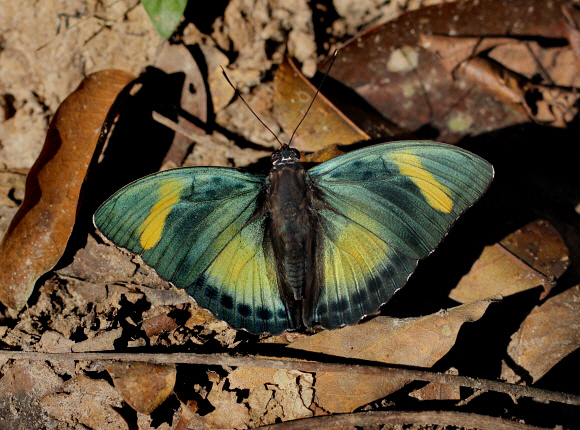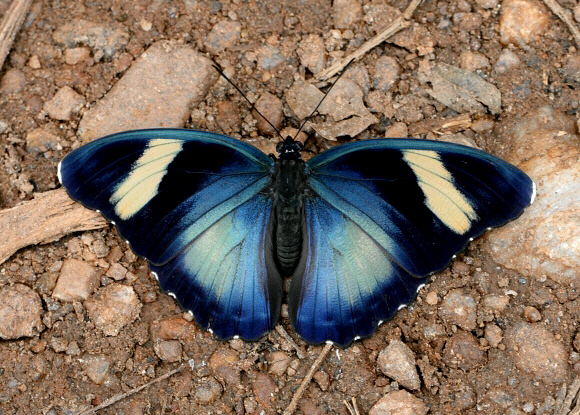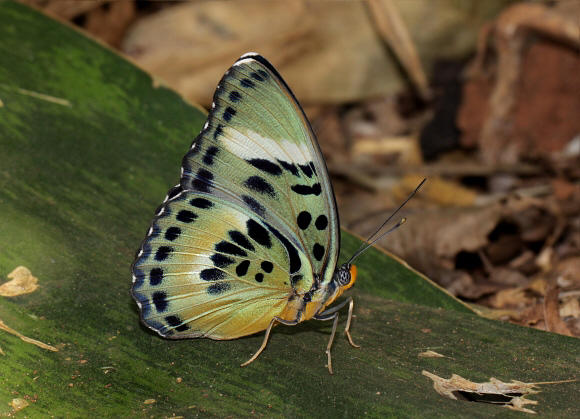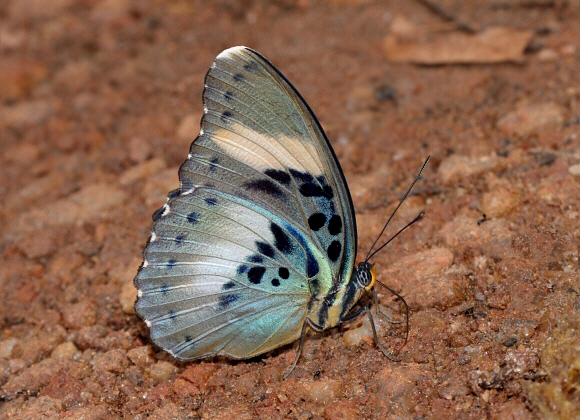
Introduction
The genus Euphaedra comprises of a yet to be discerned number of large and very beautiful forest-dwelling butterflies, all found on the African continent. In 1997 Hecq revised the genus and at that time listed a total of 180 species. This figure is challenged by other workers who believe that many of these are merely local forms or subspecies. However in 2012 Hecq produced a further revision of the eleus species-group, describing an additional 12 species, bringing the total in the genus to 192. When working in the field it is immediately obvious that there are a huge number of specimens that are noticeably dissimilar to any of the insects illustrated by Hecq but it is unclear whether these are examples of intra-specific variation, distinct taxa or hybrids.
All Euphaedra species share a common wing shape. Most have a similar pattern on the upperside – typically the basal areas of the wings ( particularly the hindwings ) have large suffused patches of metallic blue, green, orange or red. Most species also have a cream or orange sub-apical bar. The undersides are usually some shade of yellow or green, marked with black spots and streaks that vary in intensity and configuration according to taxon and locality. Many species including janetta and sarcoptera also have beautiful pink patches or streaks on the underside hindwings.
Euphaedra phaetusa males have a vivid bottle green sheen across the entire upper surface, and a yellow subapical bar. Sometimes there is a small black spot at the end of the hindwing cell. Females have a beautiful pale blue sheen and a cream subapical bar. The extent of the black markings on the underside varies considerably in both sexes.
This species is distributed from Guinea to western Nigeria.

Habitats
As with all Euphaedra species, this is a rainforest species. It survives best in good quality forests, but can also be found in mildly degraded or secondary forests.
Lifecycle
The larval foodplant is suspected to be Blighia ( Sapindaceae ).

Adult behaviour
Both sexes are strongly attracted to clusters of fallen fruits, particularly Ficus, and patrol back and forth along forest paths in search of them. It is not unusual for groups of up to 30 Euphaedra and Bebearia butterflies of various species to aggregate at such feeding sites.
The butterflies are often seen basking with wings outspread, either in sunspots on the forest floor, or on the foliage of bushes in light gaps. Despite the vividly coloured underside, the butterfly is remarkably difficult to see when at rest on the forest floor, among yellowing leaf litter.

